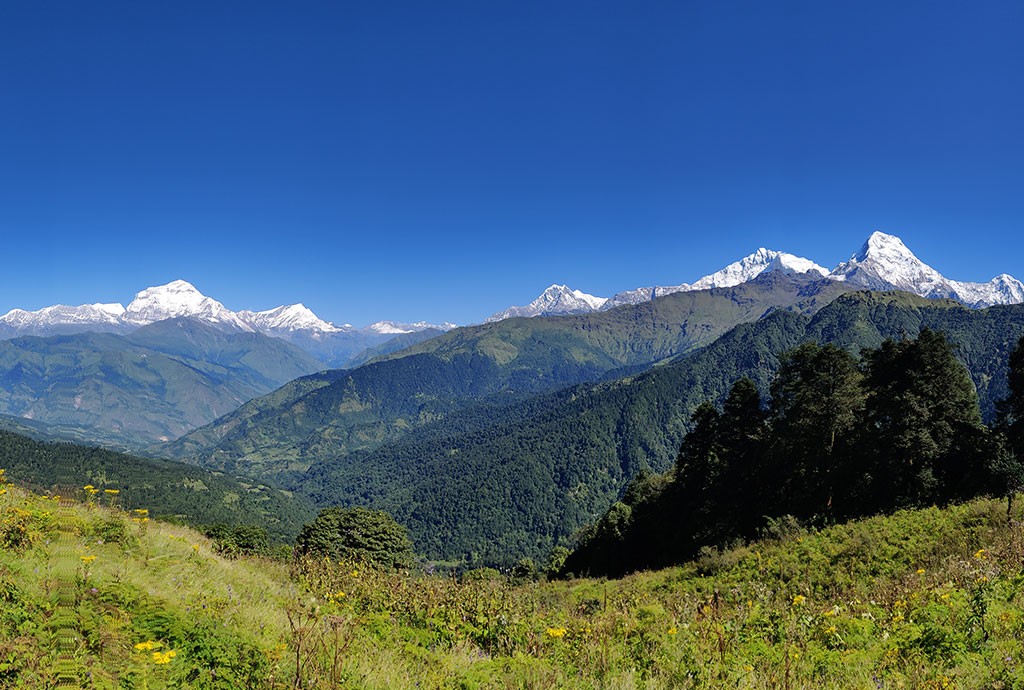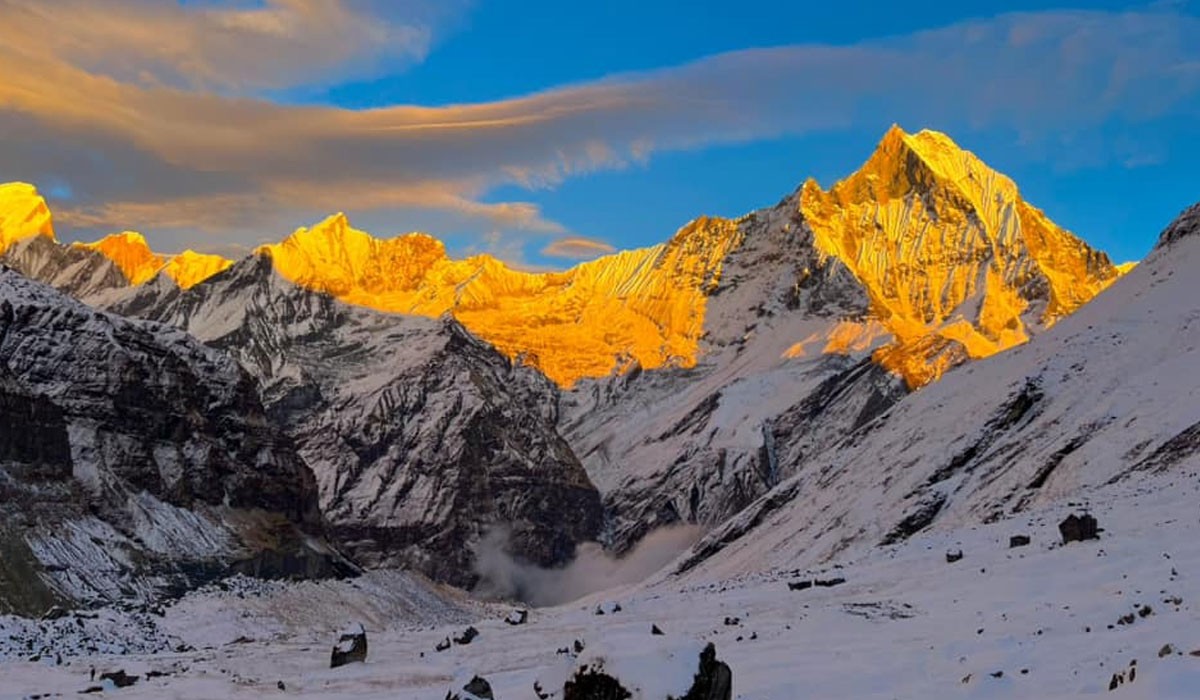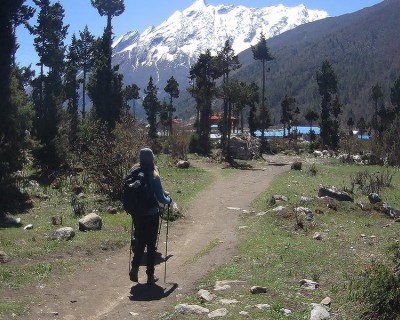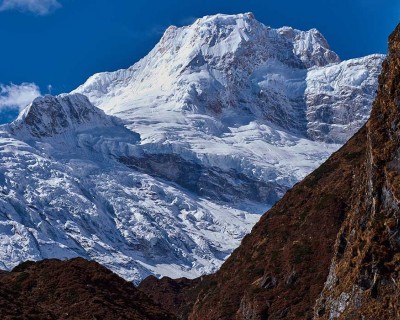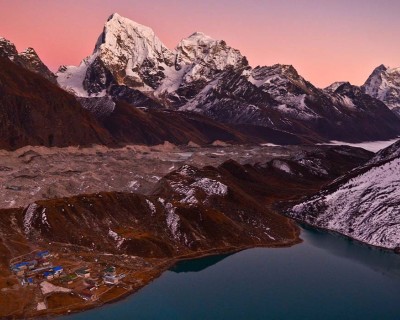What Makes Nepal the Perfect Place to Start Trekking?
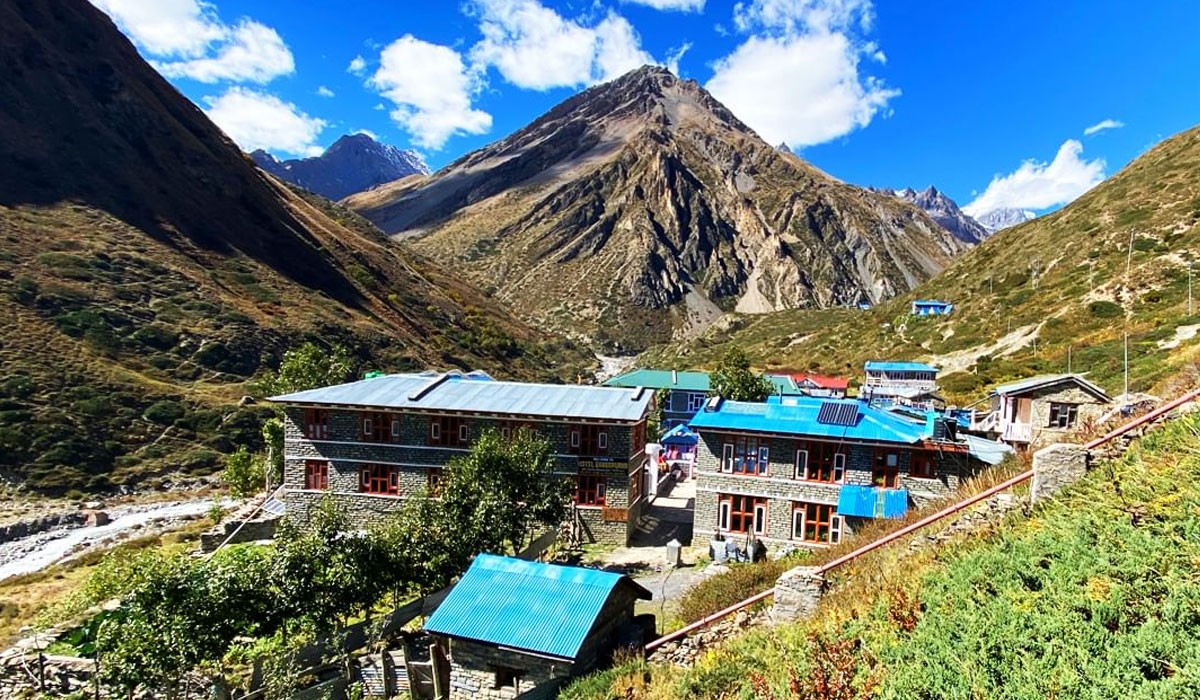
Wider Range of Starter Treks
Nepal's diverse geography offers different low to mid altitude treks that are suitable for new trekkers. Treks such as Ghorepani Poon Hill, Mardi Himal and Langtang Valley require no technical expertise or high altitude trekking background. Yet offers gloriously rich views of snow capped peaks, rustic villages and lush valleys.
These trails are shorter in distance with relatively less elevation gain and therefore are ideal for first-time trekkers. Although beginner-friendly, these trails do offer trekkers a taste of the majesty of the Himalayas and memories of a lifetime.
Well-established Trekking Infrastructure
Nepal has spent decades establishing its trekking industry and this has resulted in a highly facilitative infrastructure for tourists. Trekking routes have teahouses and lodges that provide minimal accommodation, dining and even luxuries like hot showers, Wi-Fi or charging points. This renders heavy camping gear unnecessary or even food to be brought, a blessing for novice trekkers.
Permits are relatively easy to organize and equipment can be rented or bought in towns like Kathmandu or Pokhara. Since there are good trails and established local support infrastructures, new trekkers can concern themselves less about organization and more about the experience.
Safe and Supportive Environment
Nepal trekking trails have a relatively safe and welcoming environment. Professional guides and porters are easily available. They not only play the role of providing instructions and carrying bags but also have knowledge regarding culture and fellowship. English is widely spoken by people along trek routes and cellular coverage is available for the main trails.
In case of sickness or altitude issues, helicopters are readily available especially in high-traffic spots like the Annapurna and Everest ranges. Generally, the trail culture in Nepal is very accommodating as well with trekkers usually helping one another out, which creates a community scene on the trail.
Cultural and Spiritual Experience
Nepal trekking is also an experience of deeply religious and culturally rich societies. Treks pass through typical villages where Sherpa, Tamang, Gurung or Magar villagers live, each with their own language, customs and warm hospitality.
You will be exposed to Buddhist monasteries, prayer wheels and colorful prayer flags etc which will give you a sense of tranquility and introspection. For beginners, it is an exposure to culture where you can bond with the people, history and spirituality of the region.
Adjustable Trekking Options
First-time hikers in Nepal can choose from a variety of routes and types of trekking. With either just a long weekend or a few days, there is a trail to fit your schedule. It can range from 2-day hikes to 10-day treks with considerable diversity in terrain and altitude.
You may trek on a private basis, hire a private guide or join an organized group tour. You can trek in luxury with better accommodation or use basic teahouses depending upon your budget. This diversity allows beginners to tailor the experience to their comfort level and choice of travel.
Affordable
Nepal is one of the world's most affordable trekking destinations. Teahouse stays are normally cheap and the food is basic but filling. Guides and porters are relatively inexpensive compared to the West and necessary permits are fairly priced.
You don't need to set aside enormous sums of money up front for gear. They can either be hired out or bought locally inexpensively. Nepal is an excellent bargain when you consider the quality of the scenery and cultural experience you receive.
Best Trekking in Nepal for Beginners
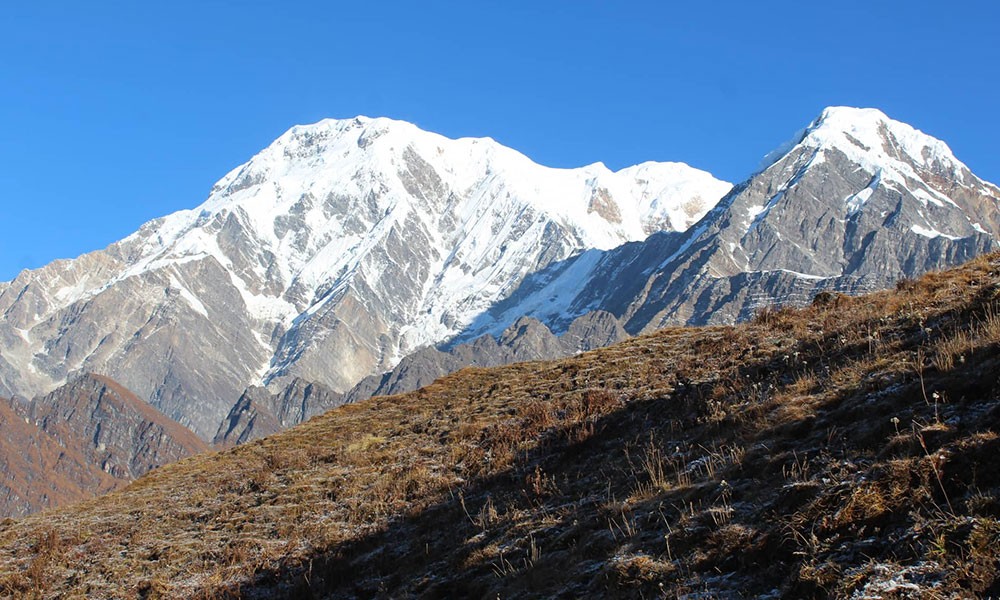
Mardi Himal Trek
It is among the best Nepal trekking routes for beginners. It offers a quieter Himalayan trail that delivers stunning alpine scenery. This path rises gradually through dense forests, high ridgelines and eventually into alpine zones. You will get to enjoy up-close views of Machapuchare, Annapurna South and Hiunchuli with each step.
While the maximum elevation is around 4,500m, the daily climb is reasonable and the trek is relatively short (5–7 days), making it a good introduction for novice trekkers who are physically fit.
The trail is well marked and while it is less crowded than Poon Hill, there are many basic teahouses along the route. One of the best aspects for beginners is being able to trek along ridgelines, which offer continuous panoramic views almost the entire way. It is a rare bonus for such a short trek.
The trek is less commercialized, so it is perfect for trekkers who wish to return to nature and enjoy a more peaceful, less crowded Himalayan trekking experience.
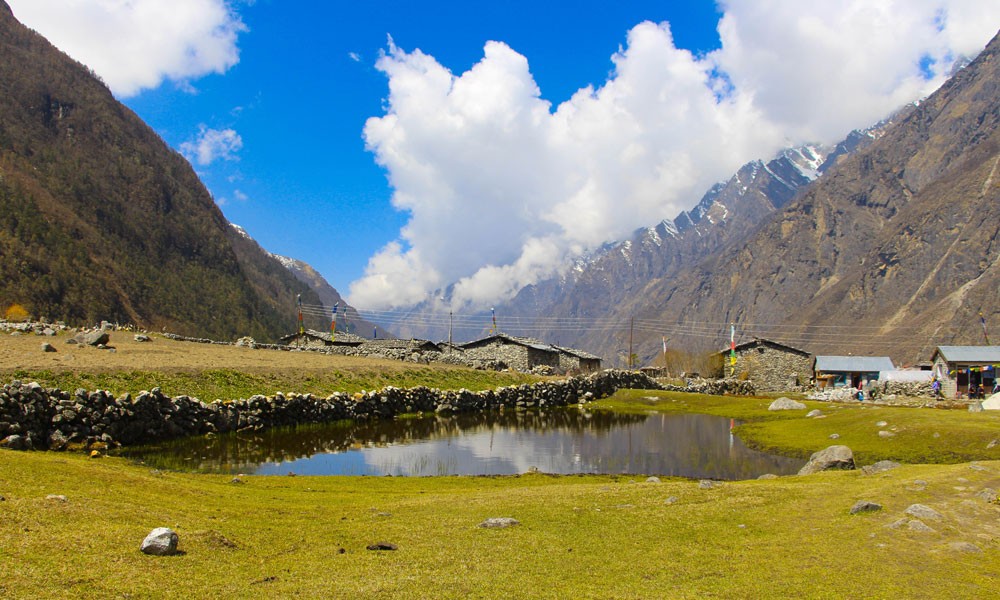
Langtang Valley Trek
Langtang Valley Trek is one of the best short treks in Nepal. It is ideal for beginners who would like to get a more immersive and slightly adventurous experience without committing to longer, high-altitude treks.
The trek takes you deep into Langtang National Park, through alpine meadows, glaciers, yak grazing land and traditional Tamang villages, gradually ascending in elevation. The maximum elevation is 4,984 meters (Tserko Ri), but as the path offers gradual acclimatization, it's possible for the majority of healthy trekkers.
The Langtang trekking route is well established with comfortable teahouses. The views of Langtang Lirung and the surrounding peaks are breathtaking. You will also experience strong local culture, particularly from the Tamang and Tibetan influenced communities.
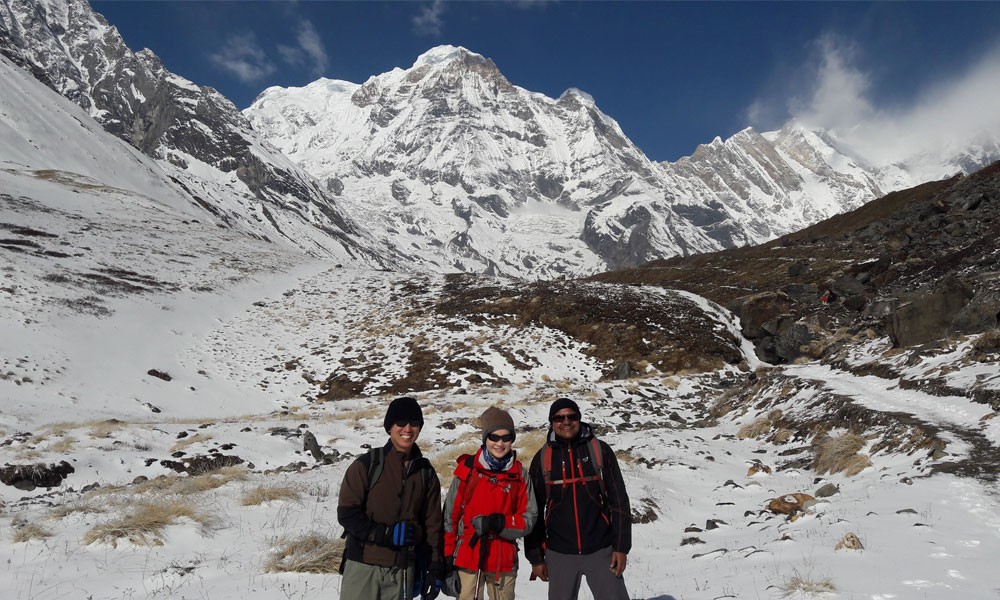
Annapurna Base Camp Trek
Annapurna Base Camp is a great choice for beginners looking to level up their trek difficulty without exiting the secure, structured and beginner friendly zone. The trek features stunning geographical diversity beginning from subtropical forests to ultimately opening up into the Annapurna Sanctuary surrounded by huge snow-capped mountains. The maximum altitude of 4,130 m (base camp) is high enough to provide you with the thrill of the Himalayas.
The trek is appropriate for novices due to the excellent infrastructure and well-trodden trails. Numerous teahouses and support services like guides and porters are readily available. If you are a first-timer willing to spend a bit more energy and time, ABC offers an unbeatable reward for your effort. You will stand in the heart of a mountain amphitheater surrounded by peaks over 7,000 meters.
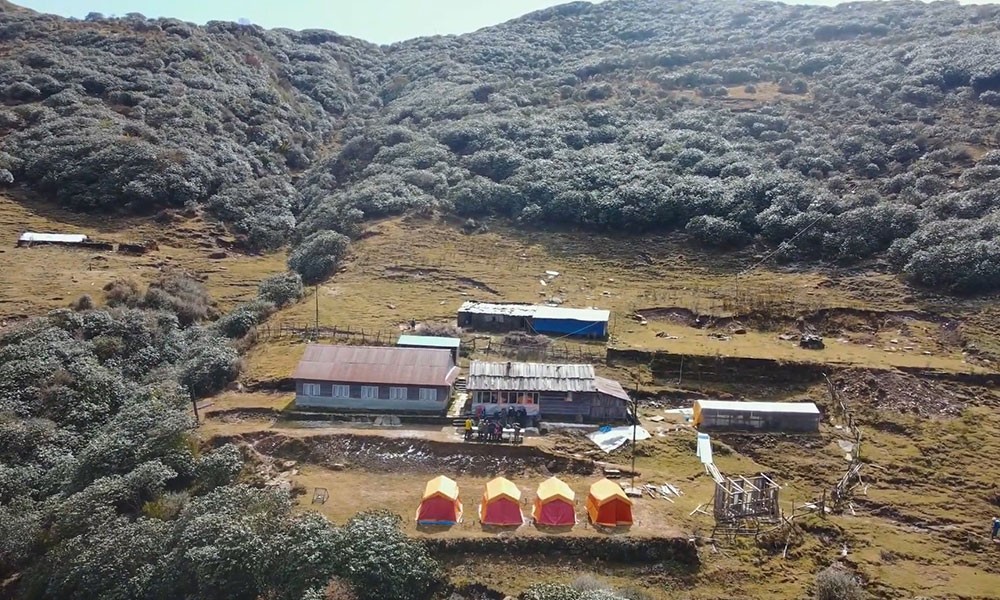
Khopra Danda (Ridge) Trek
Khopra Danda is one of the less crowded alternatives to the Annapurna trails with the finest panoramic vistas of Dhaulagiri, Annapurna South and Nilgiri. It is suitable for beginners who are in good physical shape and would like a slightly more off-the-beaten-path trekking experience.
The trail reaches its highest point of about 3,660 meters which is high enough to be thrilling yet secure for novices. It's a peaceful, quiet trail that winds through diverse environments, from forest and terraced fields to open alpine ridges.
There are community-run lodges and teahouses along the way. The day hike to Khayar Lake is an adventurous optional side trip. This trek is for beginners who enjoy beautiful mountain scenery with smaller crowds and a bit more tranquility.
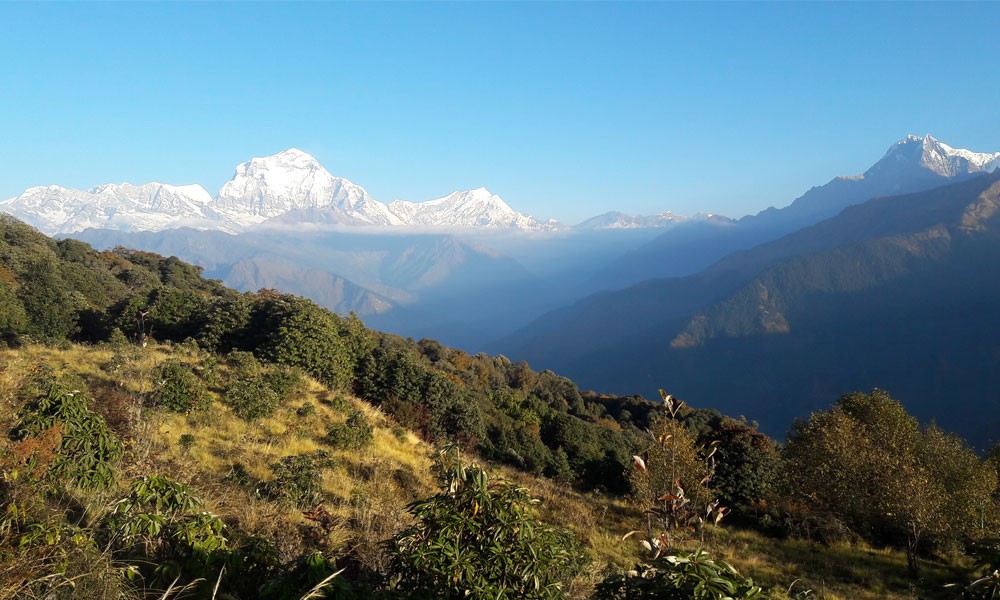
Ghorepani Poon Hill Trek
Ghorepani Poon Hill Trek is a wonderful Nepal trekking route for beginners. It is short, picturesque and relatively low altitude (3,210 meters). It has clearly marked trails, nice teahouses and easy slopes upward. The walk passes through scenic Gurung and Magar villages, rhododendron forests and terraced fields. The trekking starting point is readily accessible from Pokhara and is logistically simple.
The sunrise from Poon Hill is one of Nepal's finest panoramic mountain views, which includes Annapurna, Dhaulagiri, Machapuchare and others. Because of its low risk of altitude sickness, easy accessibility and short duration, the trek is very suitable for families, older trekkers and novices alike.
Trekking in Nepal Best Time of Year
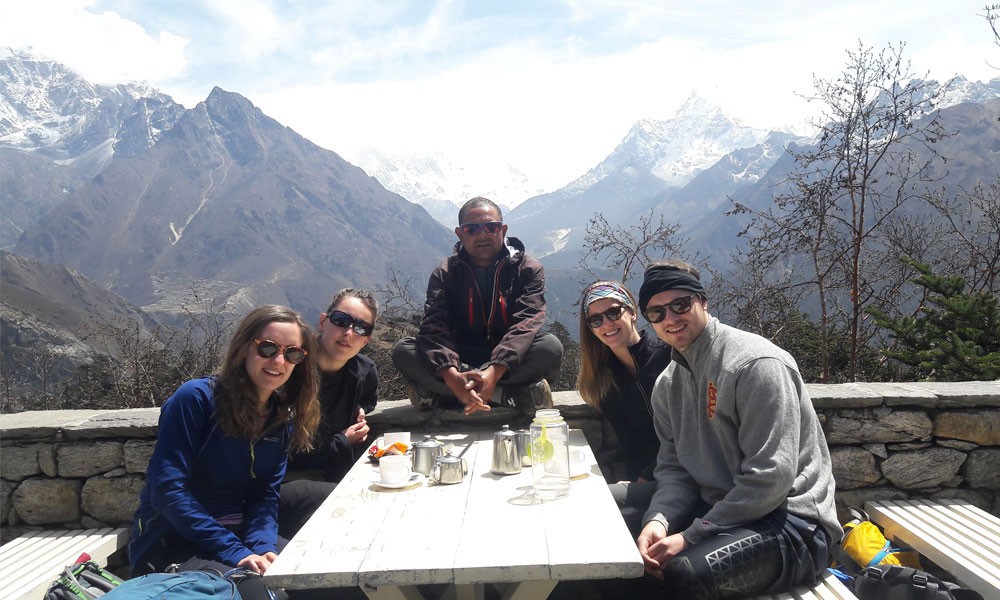
When it comes to trekking in Nepal timing is important in determining your entire experience. Each season in Nepal brings varying conditions for trekking. Nevertheless, the two peak seasons for trekking are autumn and spring. They are the best times to go trekking because of their stable climate, clear view of the mountains and pleasant temperatures.
The clear skies of the post monsoon autumn season reveal snow-clad peaks to their sheer magnificence. Likewise, the trails come alive with the steady rhythm of trekkers returning to the mountains. Whereas temperatures are pleasant in spring, days are longer and there is the added bonus of rhododendron forests in flower, enriching your adventure.
While spring and autumn are optimal for weather and scenery, they also bring heavy crowds, especially on the most visited routes like Everest Base Camp, Annapurna Base Camp and the Langtang Valley. The teahouses here may fill up and you may be asked to reserve ahead of time.
Alternatively, if you like solitude or a less crowded experience, the winter months can be highly rewarding. Trails are comparatively less crowded, skies remain clear and lower-altitude treks like Ghorepani Poon Hill, Mardi Himal or Everest Panorama are still feasible with appropriate gear.
Conversely, summer/monsoon months are mostly the worst time to trek due to heavy rain, leech-infested trails, frequent landslides and limited visibility. Trails are slippery and muddy and clouds cover the mountain scenery. But the areas of Upper Mustang and Dolpo that are in the rain shadow of the Himalayas have excellent summer trekking weather with dry landscapes and a unique Tibetan-influenced culture. With proper planning, Nepal offers rewarding trekking possibilities all year round.
Nepal Trekking for Beginners - With or Without a Guide?
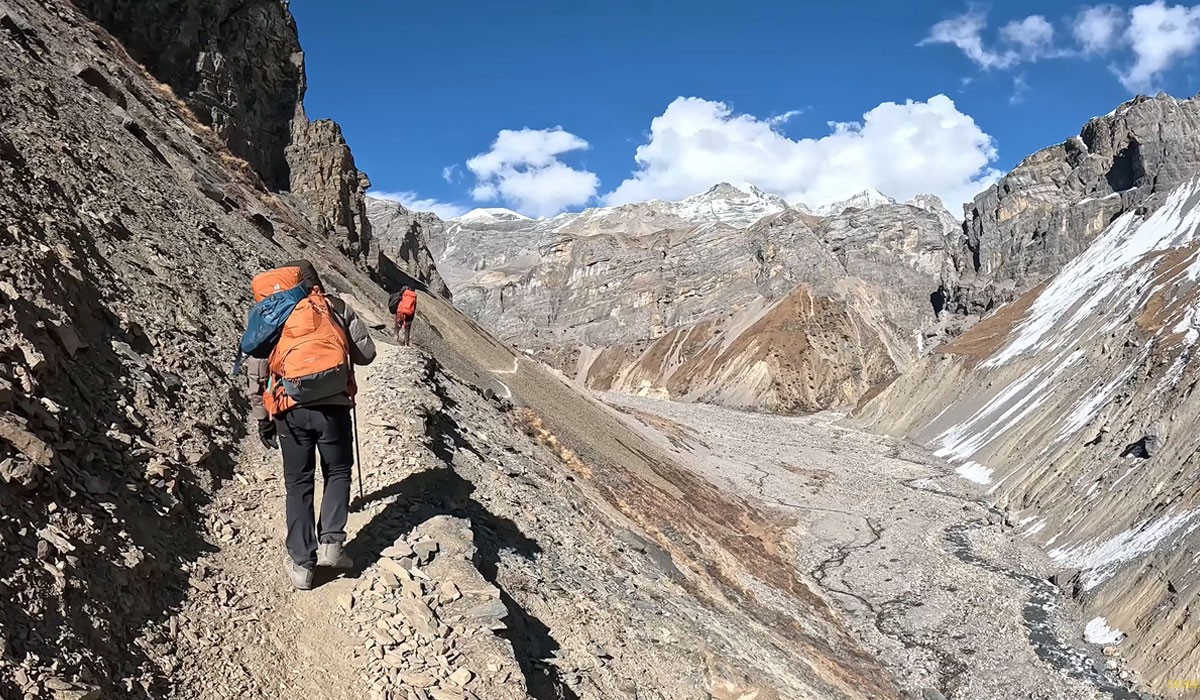
While Nepal has some of the most accessible and heavily used trails in the world, novice trekking, especially in unfamiliar terrain, poses special challenges. Hiring the services of a local licensed guide makes it easy to handle logistics like route planning, permits, accommodation and even altitude acclimatization.
Guides are usually experienced, English-speaking and have thorough familiarity with the topography, culture and safety protocols of the region. For first time trekkers, their guidance can be the difference between an excellent adventure and trouble.
On the other hand, Nepal trekking without guide offers greater flexibility and freedom. A few of Nepal's more renowned trekking routes such as Ghorepani Poon Hill, Langtang Valley and parts of the Annapurna region, are well marked and frequently trafficked. These are appropriate for beginner trekkers who are adequately fit, well-informed and well-equipped. However, solo trekking is not completely without risks.
In the event of you getting lost, injured or facing altitude sickness, help is not easily available especially during the off-season or at remote locations. More than anything, restricted areas such as Manaslu, Kanchenjunga etc, mandatorily need solo trekkers to be accompanied by certified guides, especially for safety and responsible tourism.
Lastly, for first time trekkers, a guided trek is highly recommended, especially if you are new to mountain travel or want in depth cultural experience.
Physical and Mental Preparation for Your First Trek in Nepal
Physical conditioning for Himalayan trekking is extremely essential, considering the fact that Nepalese topography is typically steep, rugged and complicated. Start a structured training program at least 8 to 12 weeksbefore your trip. Focus on cardiovascular conditioning and strength training. Backpack hikes, stair climbing, running, swimming and cycling are exercises that can mimic the activity on the trails.
Include 2–3 times per week strength work that engages your core, glutes, calves and quads. These are the muscles you use most intensely on long climbs and descents. Include regular practice hikes up hills or rough terrain, ideally in the boots and pack you will be using on the hike, to acclimatize gear and habituate your body to it.
A fit body can function better as far as stress and fatigue are concerned and acclimatization will become a less complicated affair. In addition to physical conditioning, upgrade your psychological resilience to endure long days of hiking in unstable weather conditions, with fatigue and stress. Include breathing exercises or yoga for better lung capacity and acclimatization to thin air.
Trekking in Nepal requires a high level of discomfort tolerance, flexibility and patience. The trails can be muddy, the weather cold and the hike exhausting. On top of that, you will typically reside in basic tea houses with hardly any facilities. Train yourself to embrace uncertainty, learn mindfulness practice, think positively and anticipate things not going as planned.
Trekking in Nepal for Beginners - Teahouses, Food and Daily Routine
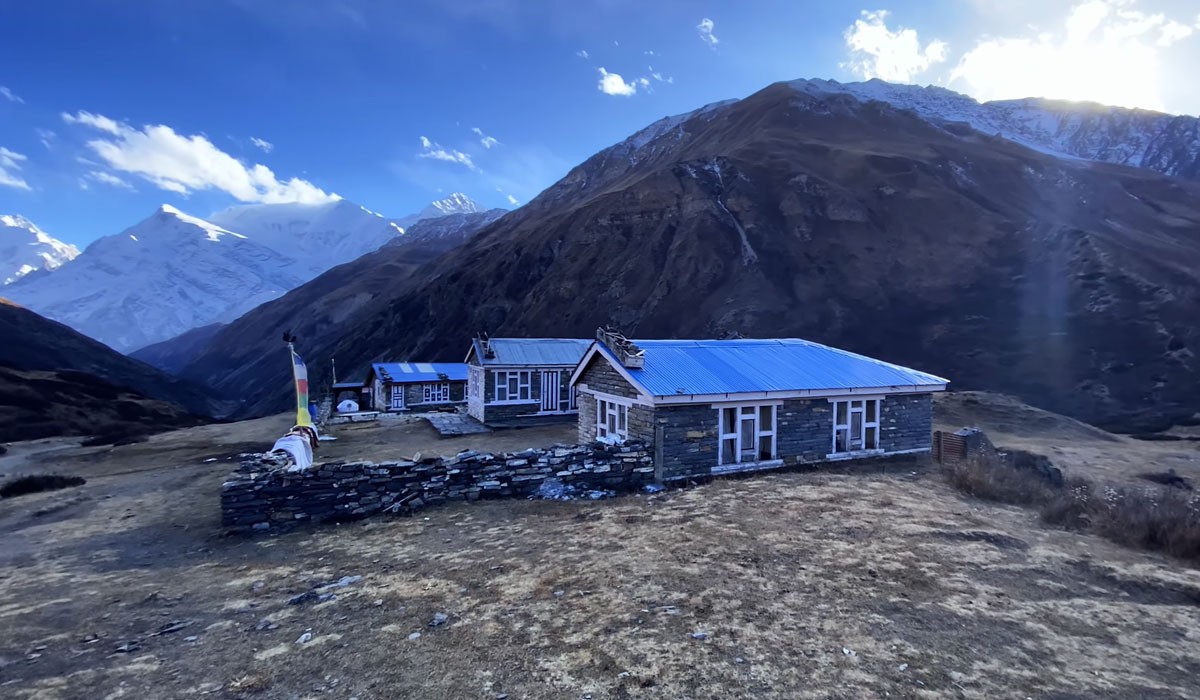
Teahouses
One of the most distinctive aspects of Nepal trekking is the teahouse system, a network of small, family run lodges spread out along trails. This system makes multi day treks more accessible and comfortable for novice trekkers than camping treks.
Teahouses typically offer basic but decent rooms with wooden beds, foam mattresses, pillows and shared bathrooms. At lower altitudes, some provide private rooms with en-suite toilets but as you ascend, the accommodations become more basic and colder with no hot shower or heating facilities.
Electricity (solar or hydro) is generally available for a fee, as are basic charging facilities and Wi-Fi. Despite the simplicity, teahouses are comfortable havens and offer the fascinating experience of meeting locals and fellow trekkers from around the globe.
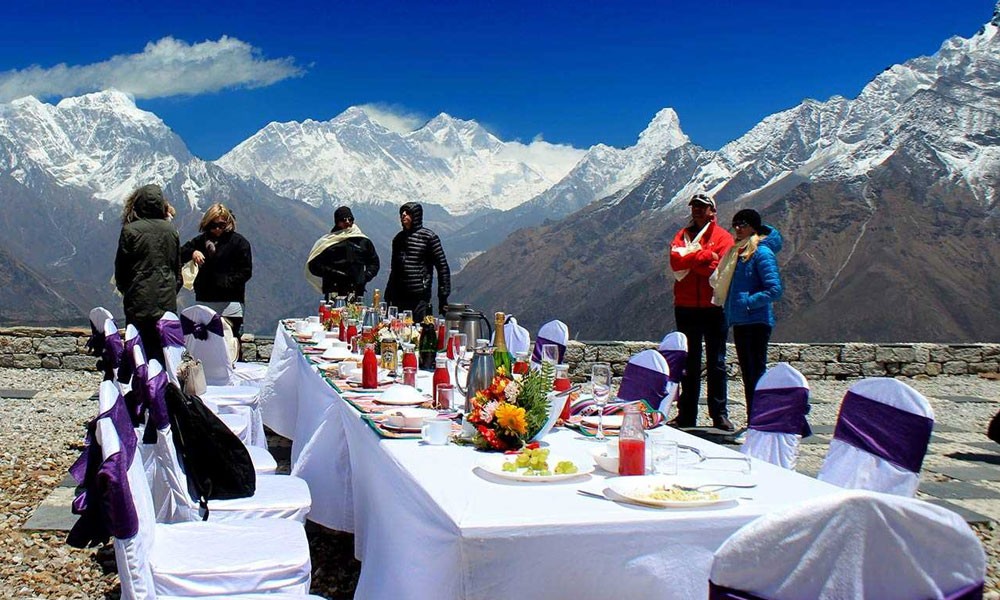
Food
Trail food is more nutritious and varied with the options declining as the elevation rises. Dal Bhat is the common fare, a hearty plate of rice, lentil soup, vegetables and sometimes pickles or curry. It is nutritious, filling and normally served with free refills, so it is a trekkers' staple. Menus including pasta, noodles, momos (dumplings), soups, pancakes and Tibetan bread are also common in the teahouses.
You can get meat dishes at lower elevations but the veggie choice is the more hygienic option when you are further up, as proper refrigeration is unlikely. Carrying some energy bars, trail mix or instant coffee/tea is recommended for variety and energy between meals. Always purify your water with tablets or filters, as bottled water is expensive and generates plastic waste.
Daily Routine
A typical trekking day starts early often around 6:30 to 7:00 AM with breakfast served at the teahouse. You will hit the trail by 7:30 to 8:00 AM and trek for 4 to 7 hours depending on the route and elevation gain. Lunch is normally at a teahouse en route and the day's trek finishes by 2:00 to 4:00 PM. This allows time for rest, exploration or acclimatization walks before dinner which is consumed between 6:00 to 7:30 PM.
The evenings are spent reading, writing, playing cards or chatting with other trekkers in the dining room. Most are in bed by 8:30–9:00 PM, ready for the next day. This structured daily rhythm of early rise, physical activity and light on technology is a refreshing balm to modern life and a key component of the Himalayan trekking experience.
Trekking for Beginners in Nepal - Altitude Awareness
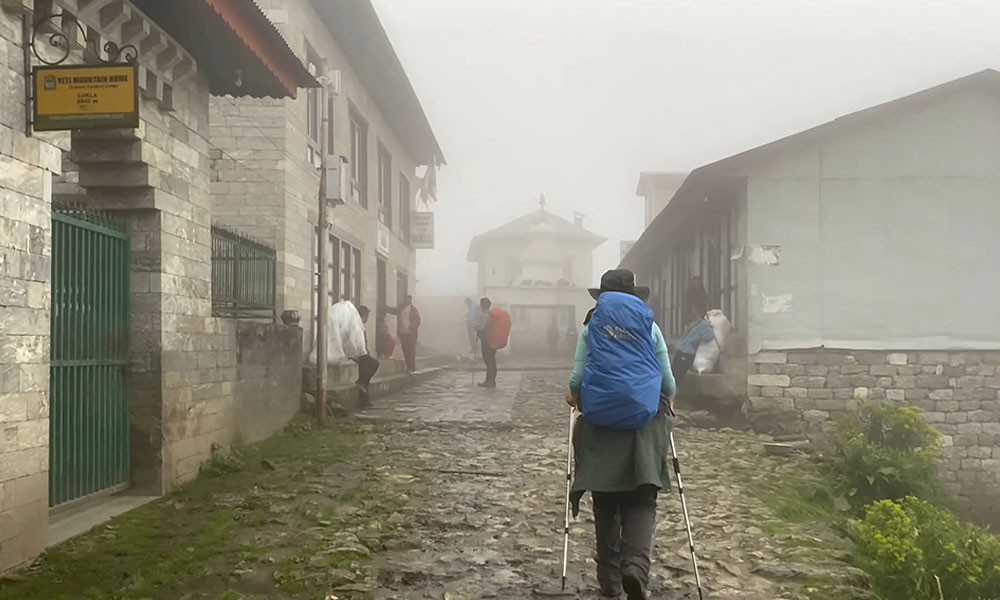
When you reach higher than 2,500 meters, the atmosphere becomes thin and has less oxygen, having a direct consequence on your body's functions and recuperation. As a trekking beginner, it should be noted that altitude sickness (Acute Mountain Sickness, or AMS) can strike anyone, regardless of their age, fitness level or trekking experience.
Headaches, nausea, dizziness, fatigue and breathlessness, if left untreated, might progress to more serious cases. Being mindful of the early signals and listening to your body's messages is the secret to a successful and pleasant trek.
Proper acclimatization is the best way to prevent AMS. It involves ascending gradually, with the body adapting to diminishing oxygen levels over a period. The general principle is to ascend sleeping altitude by no more than 300 to 500 meters a day when above 3,000 meters.
It is also effective if you incorporate an acclimatization day every 3–4 days or after a significant elevation gain. During these rest days, you don't remain completely idle. A short hike to a higher elevation and then sleeping at a lower elevation helps the body to acclimatize (commonly known as "climb high, sleep low"). Hydration is also important and water consumption of 3–4 liters per day prevents your body from possible altitude sickness.
For beginners, it is also a good idea to take preventive medication like Diamox (Acetazolamide), which can acclimatize the body more easily. But this must always be done under the advice of a doctor. Just as crucial is selecting the proper itinerary that has a gentler increase in elevation. Traveling with an experienced guide who knows how to manage altitude can be particularly useful for beginners.
Finally, altitude awareness is not about fear; it's about knowledge, preparation and pacing yourself.
Nepal Trekking Packages: Budgeting for Beginners
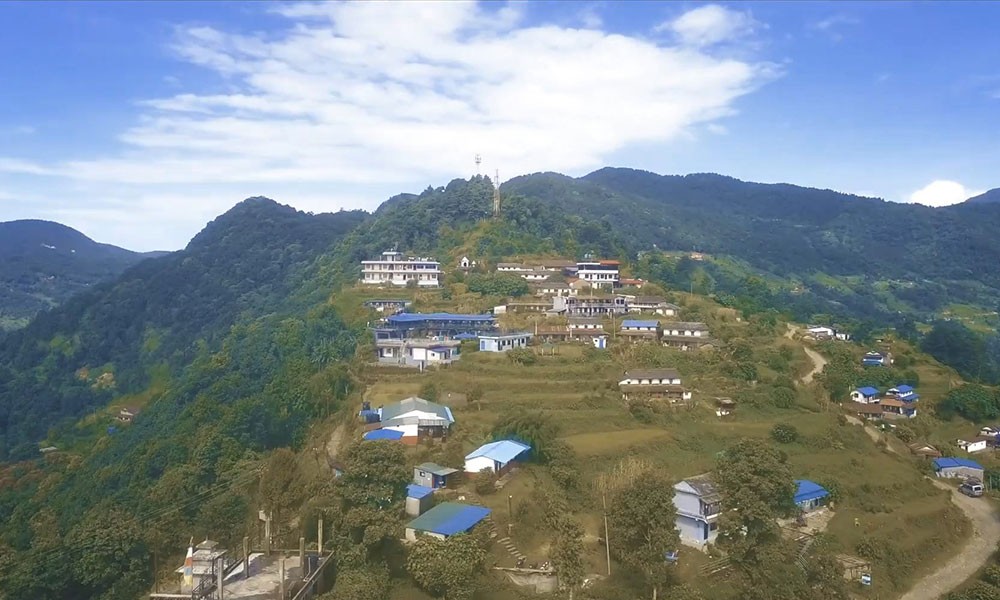
Budgeting for your first trek in Nepal involves understanding all the associated expenses so you are not caught off guard once you are on the trail. To begin with, the average cost of a guided trek varies from USD 80–100 per day based on the location and the service quality whereas independent trekking can be cheaper but requires more planning and local input.
Over a 10-day trek, food and lodging combined may average around USD 25–35 per day. Likewise, permit charges can be USD 30–50, depending on the region. Add-ons such as Wi-Fi, hot showers, telephone charging, snacks and bottled water can quickly add USD 10-15 per day if not budgeted for.
If you lack trekking gear, you may have to rent or buy it in Pokhara or Kathmandu, where it is not very expensive. Renting gear for a day could cost $1–$5 for each item. Also, it is customary to tip your guide and porter, typically 10–15% of the total cost of the trek.
All in all, a simple 10–12 day trek in Nepal will range from USD 400–1,000, depending on how comfortably you travel. Proper budgeting not only keeps your trip stress free but also ensures you are well-prepared for all the unexpected costs of trekking in the Himalayas.
Marvel Adventure's trekking tours are budget friendly and comprehensive. Our packages are designed to provide comfort, security and value so that you will be able to focus on the experience in front of you. With Marvel Adventure, you simply choose your trekking adventure and we handle everything else.
Trekking Tips for First Time Trekkers in Nepal
- Donot go for long or high treks unless you are physically and mentally prepared.
- Begin training 8–12 weeks in advance with cardio, strength and endurance training.
- Wear layers (base, insulating and shell).
- Rent equipment in Kathmandu or Pokhara as required.
- Ascend slowly, incorporate acclimatization days and drink plenty of fluid.
- Recognize the signs of altitude sickness and be willing to descend if needed.
- A porter reduces your physical burden, especially on longer treks.
- Welcome locals politely with a "Namaste" and dress humbly.
- ATMs are not available outside towns. So, withdraw the required amount beforehand.
- Budget for extra costs: snacks, hot showers, charging, Wi-Fi and tips.
- Weather, flight delays or route changes are common occurrences.
- Practice early to bed, early to rise.
- Rest, enjoy the views and soak up the culture, nature and rhythm of mountain existence.
Also Read:
